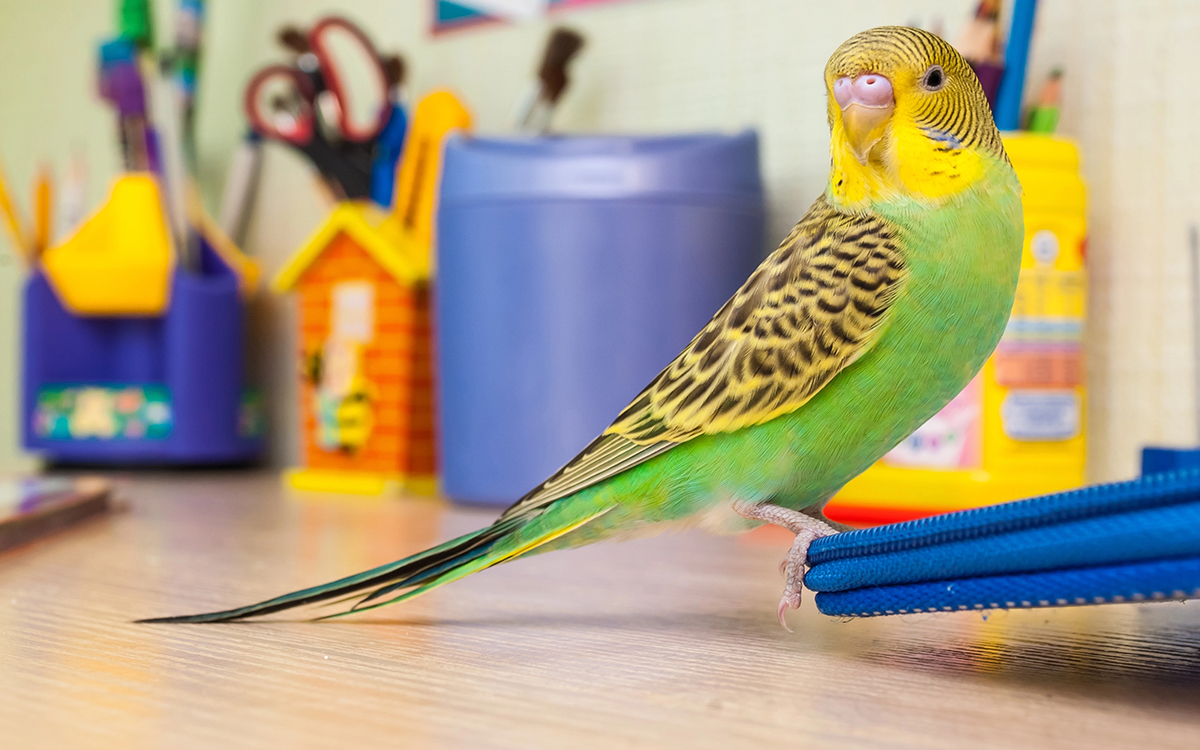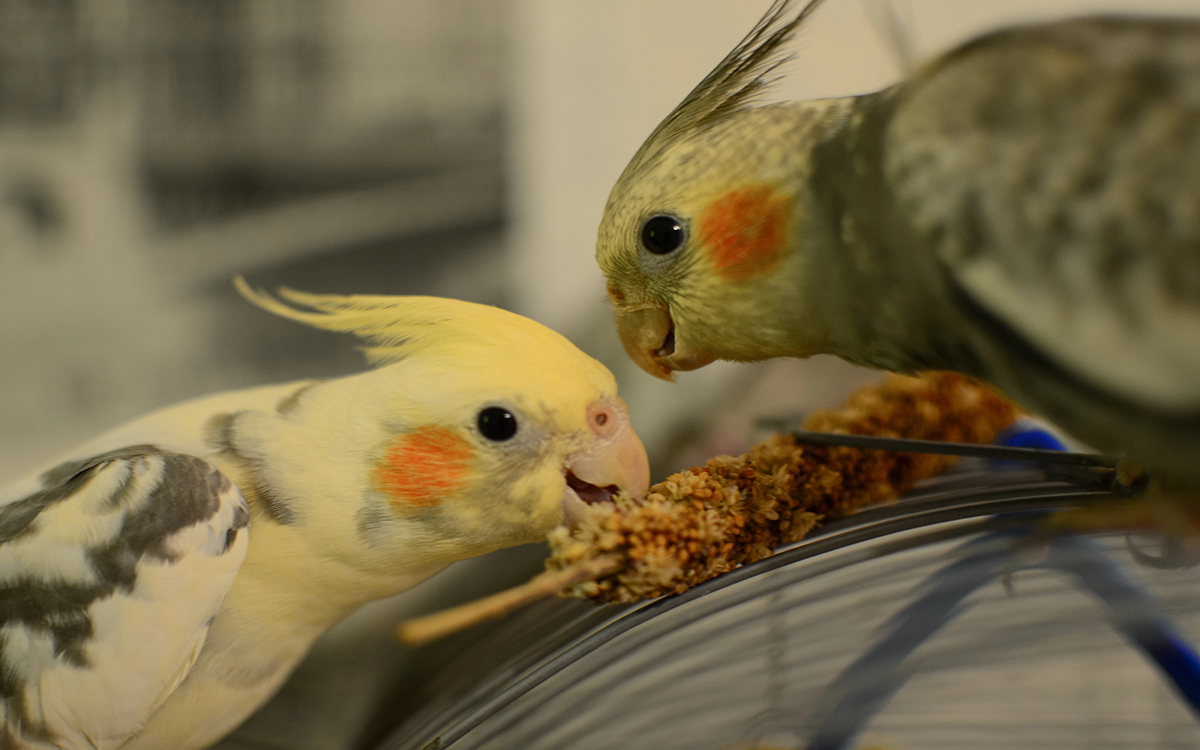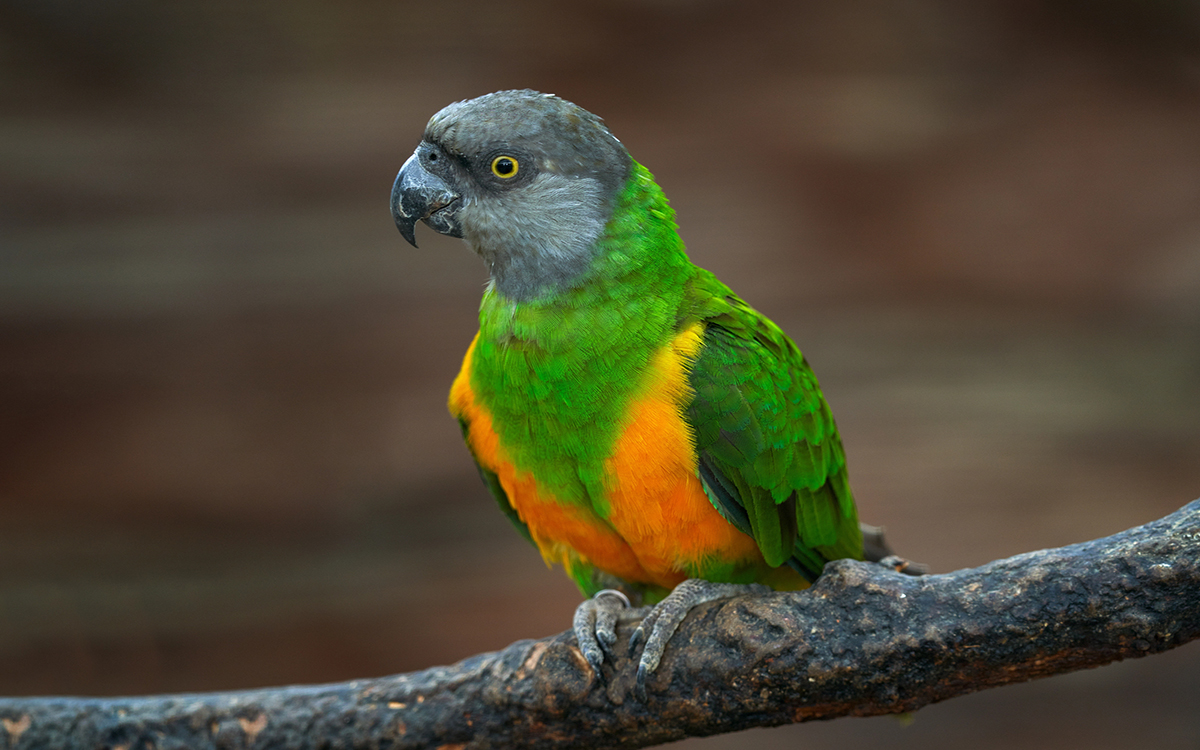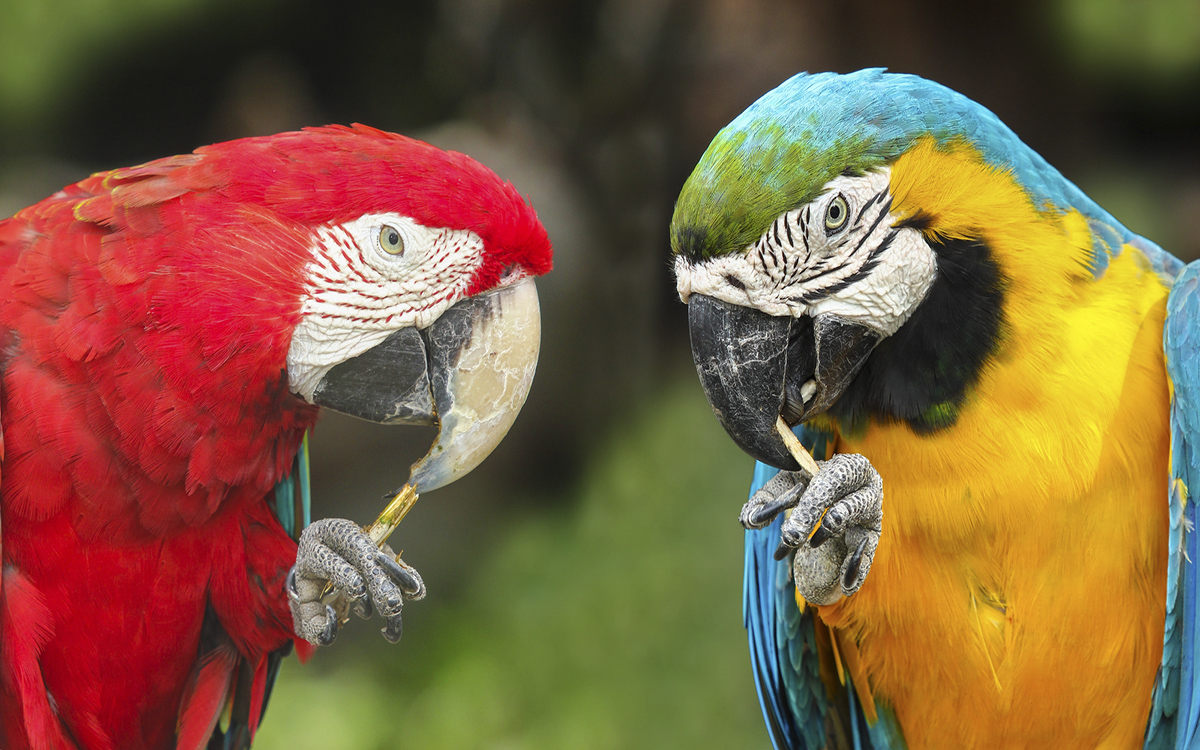Parrots are brilliant, hilarious, and occasionally louder than your neighbor’s leaf blower. The best pet parrot isn’t one single bird—it’s the one that fits your lifestyle, noise tolerance, time, and budget. Below you’ll find a clear, deeply practical guide to popular pet parrot species that can make excellent pets when their needs are met, plus how to choose wisely from the start.

TL;DR – Quick Picks
- Beginner-friendly: Budgie, Cockatiel, Green-cheeked Conure, Pacific Parrotlet (tiny but spicy)
- Lower volume (for parrots): Pionus, Green-cheeked Conure, Senegal/Meyer’s
- Talkers: Budgie (underrated!), African Grey, Amazon parrots
- Clown energy: Caique
- For experienced homes only (time + space + patience): Cockatoos, large Macaws, some Amazons
- Apartment reality check: Even “quiet” parrots are not quiet. Budgies, parrotlets, and cockatiels are the most workable—with training and enrichment.
How to Choose the Right Pet Parrot
Match your life, not your fantasy. Ask yourself:
- Time: Can you spend 2–4 hours of daily interaction/training/enrichment? (Yes, really.)
- Noise tolerance: Screaming is communication. If that’s a dealbreaker, choose smaller/quiet-leaning species and invest in training.
- Space: Flight and foraging matter. Bigger cage + daily out-of-cage time = a saner bird.
- Budget: Quality pellets/fresh produce, toys to destroy (on purpose), and an avian vet add up.
- Lifespan commitment: Some parrots outlive us. Have a care plan.
- Legalities: Some species (e.g., Quaker/Monk Parakeets) are restricted in parts of the U.S. Check local/state rules.
- Ethics: Choose captive-bred, no wild-caught. Consider adoption/rescue—many great parrots need homes.
Comparison at a Glance
*Lifespans vary by care, genetics, and access to an avian veterinarian.

Pet Parrot Species Deep-Dives (What It’s Really Like)
Budgie (Budgerigar/“Parakeet”)
Why they’re great: Tiny, clever, and often excellent talkers in a squeaky voice. Social and endlessly curious.
Care notes: Big cage for a small bird; they use every inch. Offer pellets + leafy greens + veg, with seeds as a treat.
Watch-outs: They hide illness well—regular wellness checks are key.
Best for: First-time parrot people who will train daily and provide flock time (even if that flock is you).
Cockatiel
Why they’re great: Sweet, expressive, and usually more tolerant of household chaos. World-class whistlers.
Care notes: Dustier than many species (dander); frequent cleaning/air purifiers help.
Watch-outs: Prone to fatty liver if on seed-heavy diet—transition to pellets and veg early.
Best for: Families and apartments that can handle daily out-time and gentle training.
Pacific Parrotlet
Why they’re great: Pint-size parrots with macaw-size confidence. Bond deeply, learn tricks quickly.
Care notes: Daily handling keeps nips in check. Rotate shred-and-forage toys to channel that attitude.
Watch-outs: Can become territorial if under-handled.
Best for: People who want small bird footprint with big bird personality.
Lovebird (Peach-faced, etc.)
Why they’re great: Playful, acrobatic, devoted.
Care notes: Don’t need to be kept as a pair if you provide robust daily interaction, but many thrive with a compatible friend.
Watch-outs: Nippy phases happen. Target-training helps a lot.
Best for: Hands-on owners who like interactive play.
Green-cheeked Conure (GCC)
Why they’re great: Goofy snugglers with comparatively lower volume than many conures.
Care notes: Expect “contact calls” (especially at dawn/dusk). Use reinforcement to reward quiet moments.
Watch-outs: Can become velcro birds—teach independence via foraging set-ups.
Best for: Beginners willing to train and enrich.
Sun Conure
Why they’re great: Living confetti with a big personality.
Care notes: Noise is part of the package. If neighbors are close, think twice.
Watch-outs: Without training and outlets for energy, volume increases.
Best for: Homes that don’t mind decibels.
Quaker (Monk) Parakeet
Why they’re great: Engineers of the parrot world; many become strong talkers.
Care notes: Provide safe “building” materials (palm shredders, paper) to meet that nesty drive.
Legal note: Quakers are restricted/illegal in some U.S. states—check before adopting.
Best for: Active households that enjoy training projects.
Poicephalus Group (Senegal, Meyer’s)
Why they’re great: Observant, often steadier energy and volume than conures.
Care notes: A bit more independent but still need daily interaction and puzzle-style foraging.
Best for: People wanting a “quieter-leaning” medium parrot.
Pionus (Blue-headed, White-capped)
Why they’re great: Calm demeanor, gentle presence, lower baseline volume.
Care notes: Can be scent-sensitive; avoid aerosols and non-stick fumes (really, all parrots should).
Best for: Apartment dwellers who still can commit to daily enrichment.
Caique
Why they’re great: Olympic gymnasts. If joy had feathers, it would be a caique.
Care notes: Tons of out-time, structured training, and supervised play (they can be assertive).
Watch-outs: Energy without structure = mischief.
Best for: People who genuinely want a feathered toddler.
Indian Ringneck Parakeet
Why they’re great: Sharp talkers; striking looks.
Care notes: The famous “bluffing phase” (teen attitudes) passes with patient, consistent training.
Watch-outs: Can be hands-off if you don’t reinforce handling early.
Best for: Trainers who like a challenge.
Eclectus (Male: green; Female: red/purple)
Why they’re great: Generally gentle, clear communicators, and stunning.
Care notes: Diet is different—they need fresh, fiber-rich produce daily; too much fat causes toe-tapping/wing-flipping and other issues.
Best for: Routine-loving homes willing to prep fresh food daily.
Amazon Parrots (e.g., Yellow-naped, Blue-fronted)
Why they’re great: Charisma in parrot form; many are exceptional talkers.
Care notes: Strong-willed. Need firm, positive boundaries and lots of enrichment.
Watch-outs: Seasonal hormones can be intense.
Best for: Very experienced owners comfortable reading parrot body language.
African Grey (Congo/Timneh)
Why they’re great: Legendary talkers and problem-solvers.
Care notes: High cognitive needs—foraging, puzzles, training games. Sensitive to household stress.
Watch-outs: Boredom or anxiety may lead to feather damaging behaviors.
Best for: Patient, enrichment-obsessed caretakers.
Macaws (Hahn’s/Severe to Blue-and-Gold/Scarlet/Green-wing)
Why they’re great: Deep bonds, expressive eyes, and incredible trainability.
Care notes: Space, volume, and beak power are real. Budget for large aviary setups and a steady toy subscription.
Best for: Homes with space, time, and experience.

What Parrots Need to Thrive (Regardless of Species)
Diet:
- Base of high-quality pellets (species-appropriate), plus daily dark leafy greens, veggies, and some fruit.
- Seeds and nuts = training currency and occasional treats (except for species/diets that allow more nuts—e.g., macaws).
- Never: avocado, chocolate, caffeine, alcohol, xylitol, onions/garlic in quantity, salty/fatty junk.
Environment:
- Cage big enough for full wing extension and active climbing; multiple perches (vary diameters/textures), foraging stations, and chewable toys.
- Flight (in safe area) or harness training adds exercise and choice.
Training & Enrichment:
- Positive reinforcement (clicker/marker training).
- Daily foraging (hide food, shred boxes), puzzle feeders, trick training (wave, spin, station).
- Teach independence early: reinforce calm time on a playstand away from you.
Health & Safety:
- Avian vet annual exams.
- Absolutely avoid non-stick/PTFE fumes, aerosols, scented candles, smoke.
- Keep routines; many parrots are comforted by predictability.
Real-World Costs (Annual Rough Averages)
*Adoption fees or breeder costs vary widely; prioritize reputable, welfare-focused sources.

Common New-Owner Mistakes (and Quick Fixes)
- Seed-only diets. ➜ Transition slowly to pellets; chop veggies into “bird-burrito” mixes.
- Under-enrichment. ➜ Daily foraging tasks; rotate toys weekly.
- Inconsistent handling. ➜ Short, positive sessions (3–5 minutes) throughout the day beat one long session.
- Punishing screams. ➜ Reinforce quiet moments; give an “inside voice” cue; meet needs (sleep, enrichment) first.
- Ignoring body language. ➜ Learn the tells (eye pinning, feather stance, leaning). Respect a “no.”
Adoption, Breeders & Ethics (Short Course)
- Adopt first if you can—rescues are full of wonderful, misunderstood parrots, often already socialized.
- If buying from a breeder:
- Demand closed-banded, captive-bred birds with a weaning record.
- Visit in person; look for clean, enriched spaces, not stacked bins.
- Ask about early socialization, flight fledging, and diet.
- Quarantine any new bird 30–45 days away from resident birds; schedule an avian vet exam.
Who’s the “Best Pet Parrot” for You?
If you want companionable and forgiving: start with Cockatiel or Budgie.
If you want small but cuddly clown: Green-cheeked Conure.
If you want lower-noise, thoughtful: Pionus or Poicephalus (Senegal/Meyer’s).
If you want talking superstar and you’re ready for a brainiac: African Grey (advanced).
If you want big-bird bond and your lifestyle truly fits it: Amazon/Macaw/Cockatoo (advanced).
Remember: the species is your starting point. Training, diet, enrichment, and your daily presence are what turn a “good pet” into a great relationship.

Quick Pre-Adoption Checklist
- I’ve spoken with an avian vet and know where to go in an emergency.
- I can commit 2–4 hrs/day to interaction/enrichment.
- I’ve budgeted for toys I expect to be destroyed (that’s the job!).
- My home is PTFE/Teflon-free (cookware, space heaters, hair tools).
- I’ve read up on positive reinforcement and have a beginner plan.
- I’ve checked local laws (especially for Quakers).
- I’ve considered adoption and vetted ethical breeders.
Final Take
Parrots are not décor. They’re busy, brilliant flock animals who thrive with structure, training, and daily mental work. If that lights you up, the right species—matched to your home and habits—a pet parrot can be a phenomenal companion for decades.
